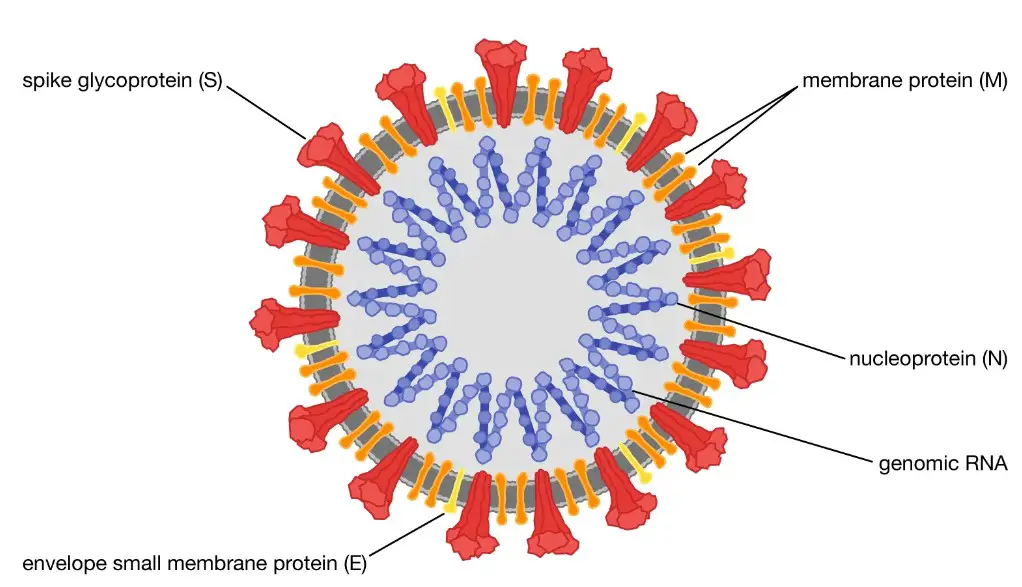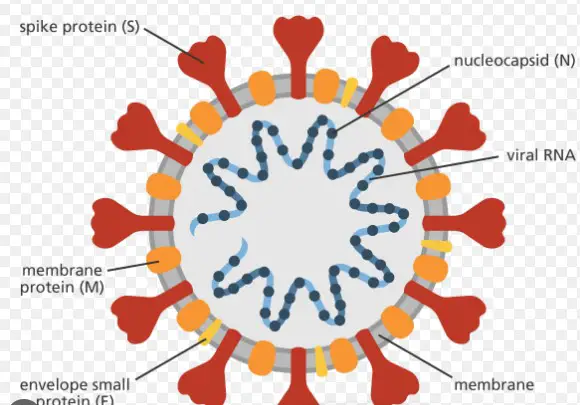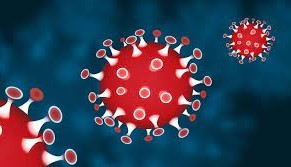Coronaviruses are a large family of viruses known to cause illnesses ranging from the common cold to more severe diseases such as Middle East Respiratory Syndrome (MERS) and Severe Acute Respiratory Syndrome (SARS). These viruses have zoonotic origins, meaning they are transmitted between animals and people. In recent years, a new member of this virus family, COVID-19, emerged, capturing global attention and raising questions about its relationship to other coronaviruses.
Coronavirus refers to a broad family of viruses capable of causing respiratory infections, while COVID-19 specifically refers to the disease caused by the novel coronavirus SARS-CoV-2, which emerged in Wuhan, China in late 2019. Unlike other coronaviruses that can cause mild symptoms similar to the common cold, COVID-19 can lead to severe respiratory complications, making it a significant concern for global health.
As the world grapples with the pandemic, it’s crucial to understand the distinct characteristics of COVID-19 compared to other coronaviruses. This includes differences in their genetic makeup, modes of transmission, and impacts on human health. Recognizing these distinctions is vital for developing targeted treatments, preventive measures, and managing the ongoing public health response.

Definitions and Basics
What is Coronavirus?
Coronaviruses are a family of viruses known for containing strains that cause potentially lethal diseases in mammals and birds. In humans, these viruses can produce respiratory infections ranging from the common cold to more severe diseases such as Middle East Respiratory Syndrome (MERS) and Severe Acute Respiratory Syndrome (SARS). These viruses are named after the crown-like spikes on their surface. “Corona” in Latin means “crown,” which refers to the appearance of the virus particles when viewed under an electron microscope.
What is COVID-19?
COVID-19, short for “Coronavirus Disease 2019,” is the disease caused by the novel coronavirus, SARS-CoV-2. It was first identified amid an outbreak of respiratory illness cases in Wuhan City, Hubei Province, China. It has since become a global pandemic, with millions of infections and widespread fatalities. COVID-19’s severity can range from mild to critical with symptoms including fever, cough, and difficulty breathing.
Virology Insights
Structure of Coronaviruses
Coronaviruses are enveloped viruses with a positive-sense single-stranded RNA genome and a nucleocapsid of helical symmetry. The viral particle is 120-160 nm in diameter. The envelope of the virus in electron micrographs appears as a distinct pair of electron dense shells.
Specifics of SARS-CoV-2
SARS-CoV-2 belongs to the beta group of coronaviruses. It has a distinctive feature regarding its structure: the spike protein. This protein plays a key role in how the virus attaches to and enters the cells of the human body. It is the target for antibodies that can neutralize the virus before it enters human cells, making it a critical component in vaccine development.
Spread and Transmission
How Coronaviruses Spread
Coronaviruses are typically spread through respiratory droplets when an infected person coughs, sneezes, or talks. People can also become infected by touching their face after touching surfaces or objects contaminated with the virus. These transmission methods highlight the importance of regular hand washing and surface cleaning in preventing the spread of the virus.
COVID-19 Transmission Dynamics
COVID-19 has shown to spread more rapidly than other coronaviruses, partly due to its high level of contagiousness. Even individuals who do not show symptoms can transmit the virus to others, making containment and mitigation efforts particularly challenging. This asymptomatic transmission has implications for public health responses, including the need for social distancing, face masks, and widespread testing.
Symptoms Comparison
General Coronavirus Symptoms
Symptoms of common coronavirus infections are similar to any typical upper respiratory infection, including runny nose, coughing, sore throat, and sometimes a fever. In most cases, these viruses cause mild to moderate symptoms in individuals.
COVID-19 Specific Symptoms
In contrast, COVID-19 symptoms can be much more severe and have included, in addition to the above, difficulty breathing, persistent pain or pressure in the chest, new confusion or inability to awaken, and bluish lips or face. This array of symptoms has prompted global concerns, especially because severe cases can lead to pneumonia, severe acute respiratory syndrome, kidney failure, and even death.

Diagnostic Methods
Testing for Coronaviruses
Diagnostic tests for coronaviruses involve detecting the presence of viral RNA in respiratory specimens. The most common method is the reverse transcription polymerase chain reaction (RT-PCR), which is highly sensitive and specific for the virus’s genetic material. This test requires collecting a sample from the patient’s throat or nose with a swab. Rapid antigen tests also exist, which can provide results quickly but are less accurate than RT-PCR.
Detecting COVID-19
For COVID-19, the testing process is similar but focuses specifically on identifying SARS-CoV-2 RNA. In addition to RT-PCR and rapid antigen tests, serological tests can detect antibodies, indicating past infection and potentially some level of immunity. These diagnostic tools are crucial for tracking the spread of the virus and implementing public health measures.
Treatment Protocols
Treating Common Coronaviruses
Treatment for common coronaviruses typically involves managing symptoms, as there is no specific antiviral treatment for these infections. Recommended approaches include:
- Rest and avoid overexertion
- Drink enough water
- Avoid smoking and smoky areas
- Take acetaminophen or ibuprofen to reduce fever and pain
COVID-19 Treatments
For COVID-19, treatment strategies can vary significantly based on the severity of the case. Mild cases may be managed at home with similar supportive care as common coronaviruses. More severe cases may require:
- Hospitalization
- Oxygen therapy
- Antiviral drugs like remdesivir
- Immune modulators and corticosteroids
- Support in an intensive care unit for critical cases
Experimental treatments and ongoing clinical trials are continuously evolving to improve outcomes for COVID-19 patients.
Prevention Strategies
General Preventive Measures
General recommendations to prevent the spread of respiratory viruses include:
- Frequent hand washing with soap and water or alcohol-based hand sanitizer
- Respiratory hygiene, such as covering coughs and sneezes with a tissue or elbow
- Regular cleaning of frequently touched surfaces
- Staying home when sick
COVID-19 Specific Advice
Specific strategies to combat the spread of COVID-19 emphasize:
- Mask-wearing in public, especially indoors or when social distancing cannot be maintained
- Social distancing to reduce virus transmission
- Vaccination, which has proven effective in preventing severe illness, hospitalization, and death
Global Impact
Economic Effects
The global economic impact of COVID-19 has been profound, affecting businesses, employment, and economies on an international scale. Shutdowns and reduced consumer spending have led to economic contraction, with significant impacts on industries such as travel, hospitality, and retail.
Social and Health Impacts
Socially, the pandemic has altered how people interact, with increased reliance on virtual communication and social distancing. The health impacts have been vast, not only due to the direct effects of the virus but also because of the strain on healthcare systems and disruptions to routine care.
Future Outlook
Vaccine Development
Vaccine development for COVID-19 has been unprecedentedly rapid. Multiple vaccines have been authorized for emergency use, offering hope for a significant reduction in the disease’s spread and severity. Continued efforts in vaccine distribution and public compliance are critical for overcoming the pandemic.
Predictions for Future Pandemics
Experts suggest that future pandemics are likely, given global connectivity and the ongoing risk of zoonotic diseases. Preparing for these requires:
- Enhanced surveillance systems
- Rapid response strategies
- Global cooperation in health security
Addressing the lessons learned from COVID-19 will be essential in managing future health crises effectively.
Frequently Asked Questions
What is a Coronavirus?
Coronaviruses are a large group of viruses that can infect birds and mammals, including humans. They are named for the crown-like spikes on their surface and can cause respiratory, gastrointestinal, liver, and neurological diseases.
How does COVID-19 differ from other Coronaviruses?
COVID-19 is caused by one specific strain of coronavirus, SARS-CoV-2, which is highly contagious and can lead to severe respiratory disease and death, particularly in older adults and those with underlying health conditions. Unlike common coronaviruses, COVID-19 has caused a global pandemic due to its rapid spread.
What are common symptoms of COVID-19?
Common symptoms of COVID-19 include fever, dry cough, and tiredness. Some patients may experience aches and pains, nasal congestion, headache, conjunctivitis, sore throat, diarrhea, loss of taste or smell, or a skin rash.
How can COVID-19 be prevented?
Preventing COVID-19 involves frequent handwashing, maintaining social distance, avoiding touching the face, practicing respiratory hygiene such as covering coughs and sneezes, and wearing masks in public settings. Vaccination is also a key preventive measure.
Is there a vaccine for COVID-19?
Yes, several vaccines have been developed and approved for emergency use to prevent COVID-19, including mRNA vaccines, viral vector vaccines, and inactivated virus vaccines. These vaccines have shown high efficacy in preventing severe illness, hospitalization, and death caused by COVID-19.
Conclusion
The distinction between the broader category of coronaviruses and the specific disease COVID-19 is crucial for understanding the current global health challenge. While all coronaviruses share certain features, the unique characteristics of COVID-19, including its transmission dynamics and impact on health systems, underscore the need for specialized responses and ongoing research.
As the world continues to navigate the ramifications of this pandemic, the importance of accurate information and proactive health measures remains paramount. By distinguishing between general coronavirus characteristics and specific details about COVID-19, individuals and communities are better equipped to adopt effective strategies for prevention and management.


